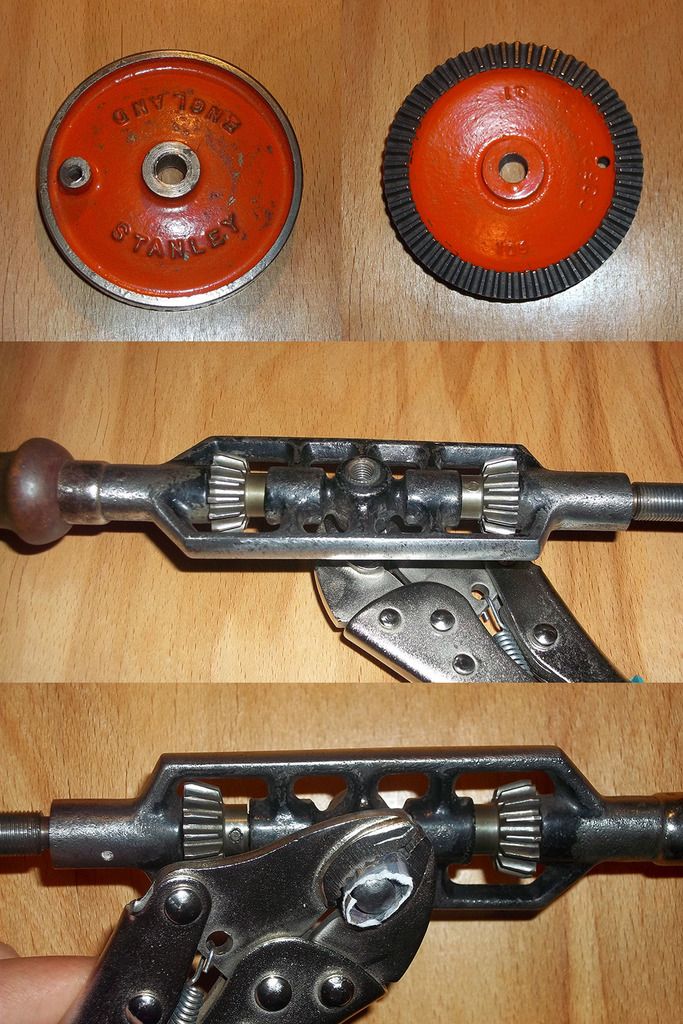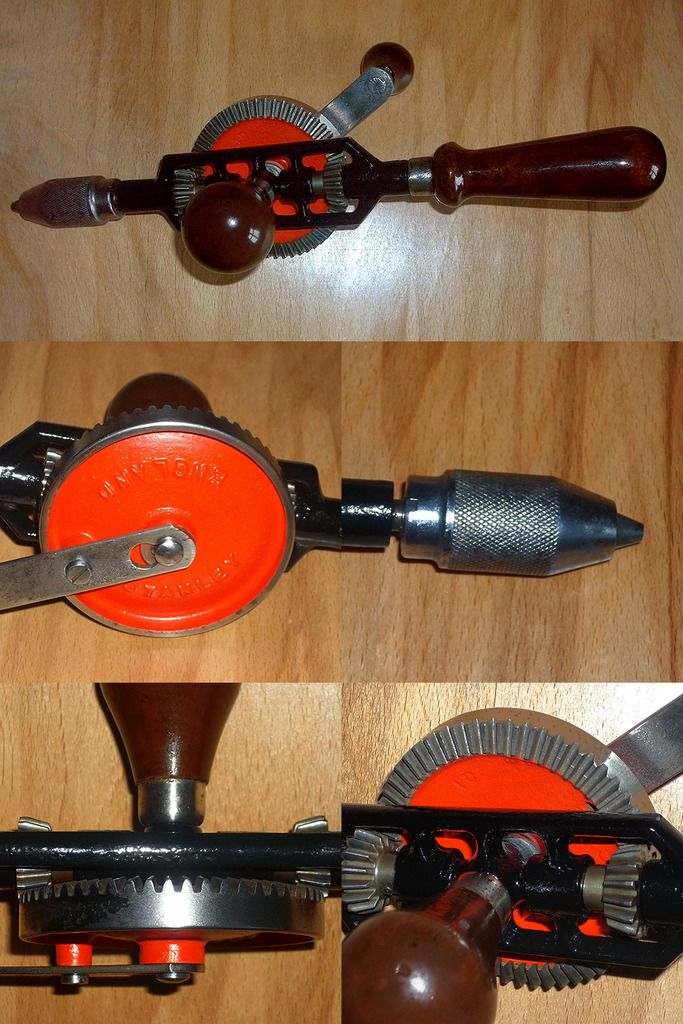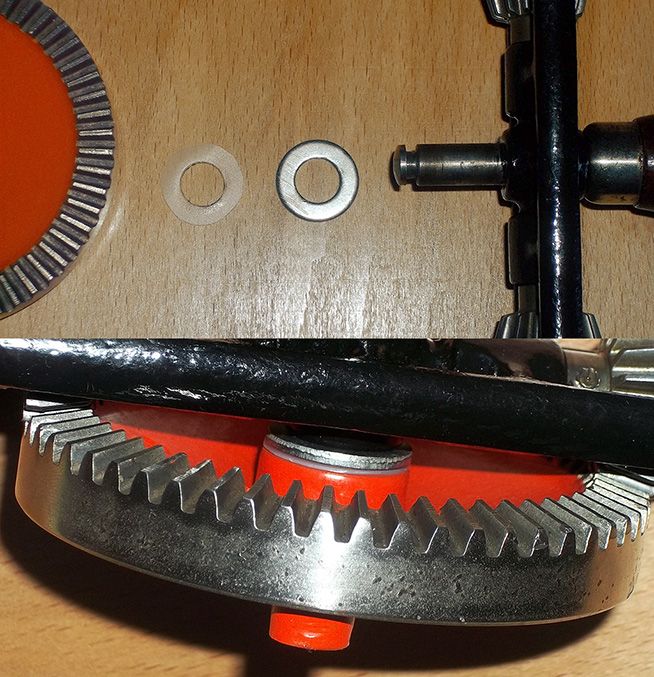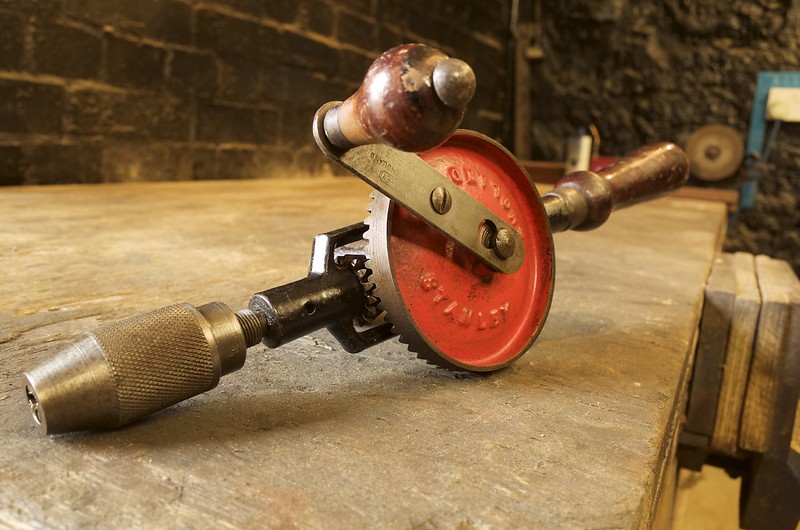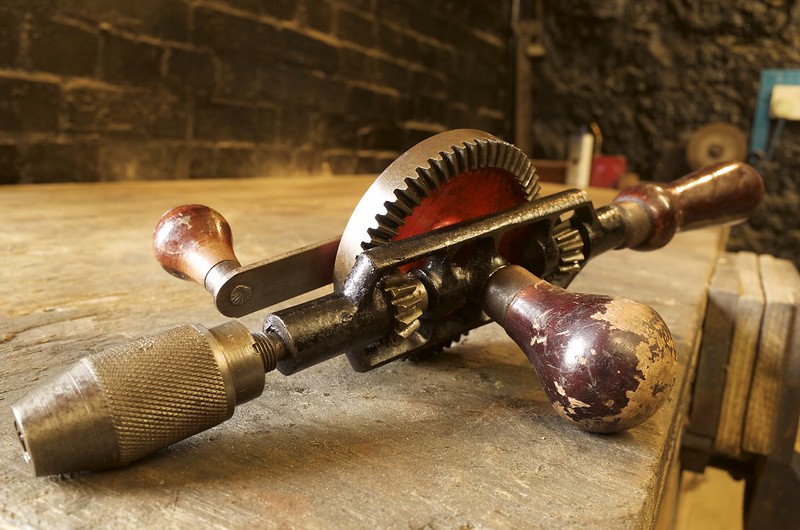Here it is as I bought it in all its rusty, flaking glory:
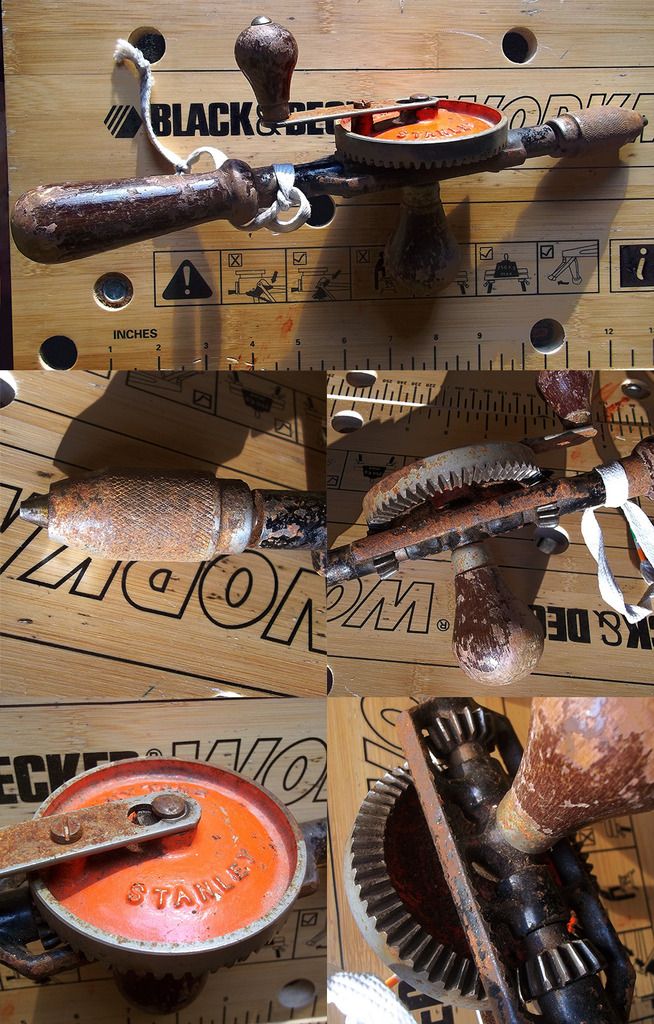
A bit rough on the outside but it ran smoothly enough as the gearing was nearly free from rust which I thought was the main thing. Cosmetically this was in worse shape than I'd have preferred to have started with, and it wasn't just the one or two quid it might have been in the UK either, but it was the best I'd seen to that point so I took the chance. I didn't know it at the time but in the two years since I haven't seen one in better condition at the car boots I visit
The chuck looks worse than it was, it was oily inside where it matters and as heavy as that rust looks it was still superficial. If you look at the bottom-right image the inside of the wheel looks rough as rats, but I was pleasantly surprised when I took it apart for cleaning to discover that wasn't rust, it was greasy sawdust. This had protected the paint underneath from moisture and it was nearly pristine as a result.

A bit rough on the outside but it ran smoothly enough as the gearing was nearly free from rust which I thought was the main thing. Cosmetically this was in worse shape than I'd have preferred to have started with, and it wasn't just the one or two quid it might have been in the UK either, but it was the best I'd seen to that point so I took the chance. I didn't know it at the time but in the two years since I haven't seen one in better condition at the car boots I visit
The chuck looks worse than it was, it was oily inside where it matters and as heavy as that rust looks it was still superficial. If you look at the bottom-right image the inside of the wheel looks rough as rats, but I was pleasantly surprised when I took it apart for cleaning to discover that wasn't rust, it was greasy sawdust. This had protected the paint underneath from moisture and it was nearly pristine as a result.





